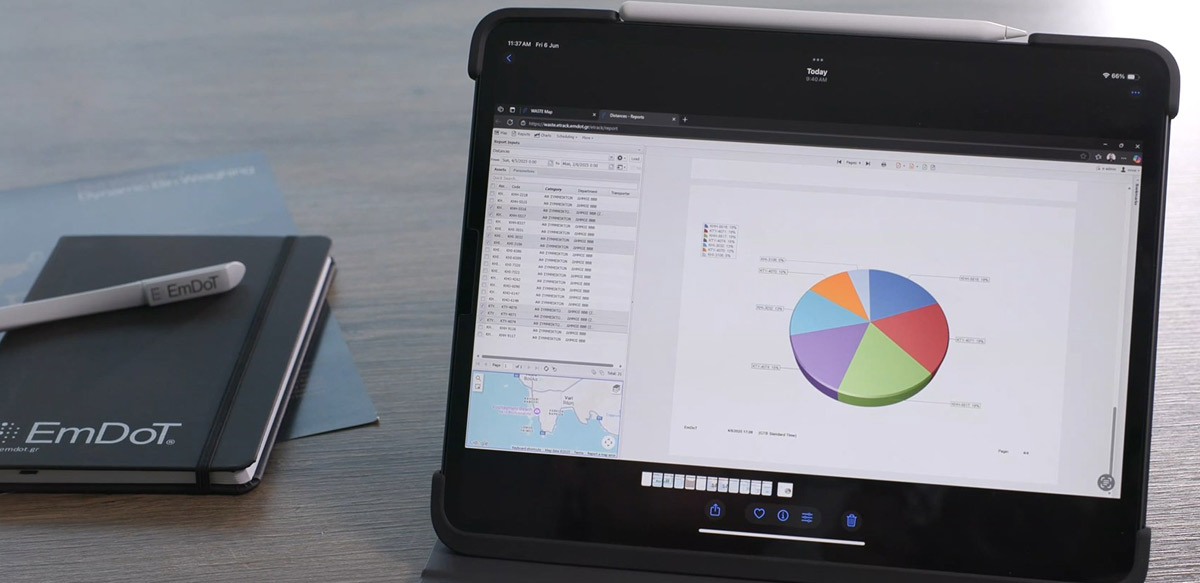The power of Capacity Management

Smarter Waste Collection for maximum efficiency
Introduction
Waste management is evolving rapidly, and municipalities and businesses must keep up with growing demands, regulatory requirements, and sustainability goals. One of the biggest challenges is ensuring that waste collection operations are cost-effective, resource-efficient, and environmentally responsible.
This is where Capacity Management comes in—a data-driven approach that optimizes waste collection, fleet management, and resource allocation using AI-powered analytics. This blog explores the importance of Capacity Management, its key benefits, and how EmDoT’s Capacity Management service is transforming waste management strategies worldwide.
The challenges of traditional Waste Collection
Most cities and waste management companies struggle with inefficiencies in:
1.Bin Placement & Distribution
- Bins are often placed based on intuition rather than data, leading to uneven waste distribution.
- Overflowing bins create hygiene and environmental issues, while underutilized bins waste resources.
2. Waste Collection Scheduling
- Collection routes are typically fixed, leading to unnecessary pickups or missed overflowing bins.
- Seasonal and commercial activity variations aren’t considered, causing inefficiencies in high-traffic areas.
3. Fleet & Workforce Allocation
- Trucks operate on static schedules, sometimes running below capacity or making extra trips.
- Peak hours and road congestion aren’t accounted for, increasing fuel costs and emissions.
The result? Higher costs, inefficiencies, and environmental impact. Without real-time insights, waste collection remains reactive rather than strategic.
How Capacity Management solves these issues
Capacity Management transforms waste collection into a proactive, data-driven operation by optimizing key decision-making areas:
1. Optimal Bin Placement
- Uses real-time data on waste production, population density, and collection frequency to determine the best bin locations.
- Ensures balanced waste distribution across urban areas.
- Reduces overflows and unnecessary pickups, improving efficiency.
2. Dynamic Waste Collection Scheduling
- AI-powered algorithms adjust collection times based on:
- Bin fill rates, ensuring collection right before bins overflow.
- Road traffic conditions, minimizing delays and fuel waste.
- Commercial and residential waste production peaks.
3. Fleet Optimization & Cost Reduction
- Determines the optimal number of trucks needed based on real-time and historical data.
- Reduces unnecessary trips and maximizes fleet usage.
- Cuts fuel consumption and lowers maintenance costs.
4. Smarter Workforce Management
- Allocates personnel based on real demand, ensuring the right number of workers per shift.
- Prevents workforce shortages or excessive labor costs.
- Improves service reliability by ensuring timely waste collection.
The Benefits of Capacity Management
- Cost Savings – Reduces waste collection costs by optimizing routes, schedules, and fleet usage.
- Environmental Impact – Lowers CO₂ emissions by cutting unnecessary fuel consumption.
- Improved Service Efficiency – Ensures bins are collected at the right time, avoiding overflow and hygiene issues.
- Better Resource Utilization – Allocates trucks, personnel, and bins where they are needed most.
- Scalability for Smart Cities – Provides a foundation for sustainable urban waste management.
Why Choose EmDoT’s Capacity Management?
EmDoT’s Capacity Management service combines:
- Advanced AI algorithms to predict and optimize waste collection needs. – Seamless integration with DoT.Waste & DoT.Weighing.
- Consulting support to help cities implement best-practice waste management strategies.
Want to optimize your waste management system? Learn more about DoT.Waste

